This post may contain affiliate links. Learn more.
These spicy refrigerator pickles are the best of both worlds: classic crisp, garlicky, dilly cukes leveled up with our homemade pickling spice blend, but without all the work of canning. They’re a breeze to make and keep well in the fridge for a month, if they last that long.
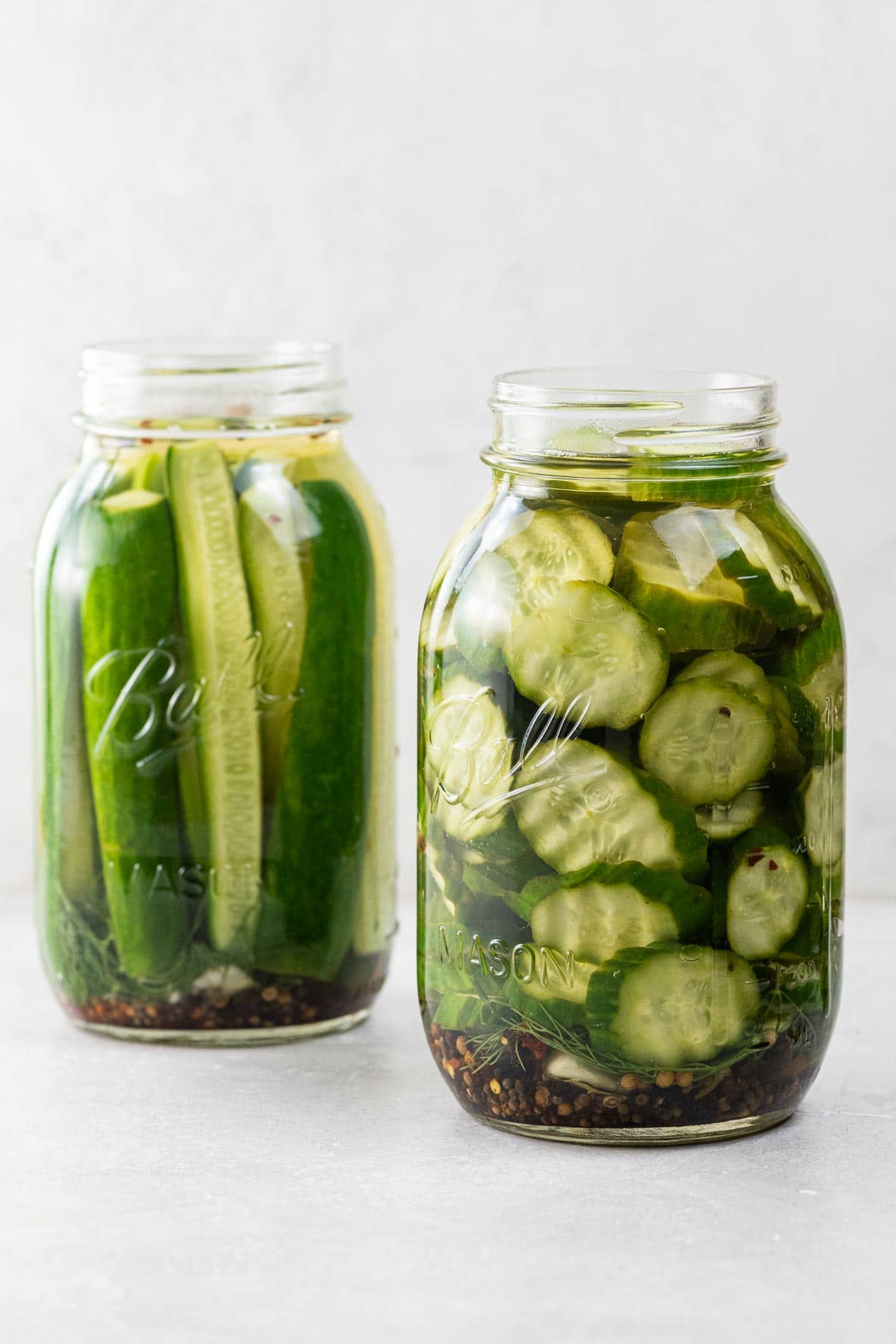
Why this recipe works
Whether you slice them for sandwiches or cut them into spears for snacking, spicy refrigerator pickles are one of those recipes to keep on hand at all times. They’re:
- Bathed in a well-balanced brine
- Leveled up with our perfected pickling spice recipe
- Garlicky and dilly
- As spicy as you like
- Perfectly crisp
I first published a version of homemade pickles here way back in 2009. I didn’t end up sticking with that method, but I’ve kept the original text below the recipe card for those who like reading the more old-school personal blog stories. We had such a great day making those pickles with special friends. I remember it so well and so fondly.
What you’ll need
Here’s a glance at the ingredients you’ll need to make this recipe.
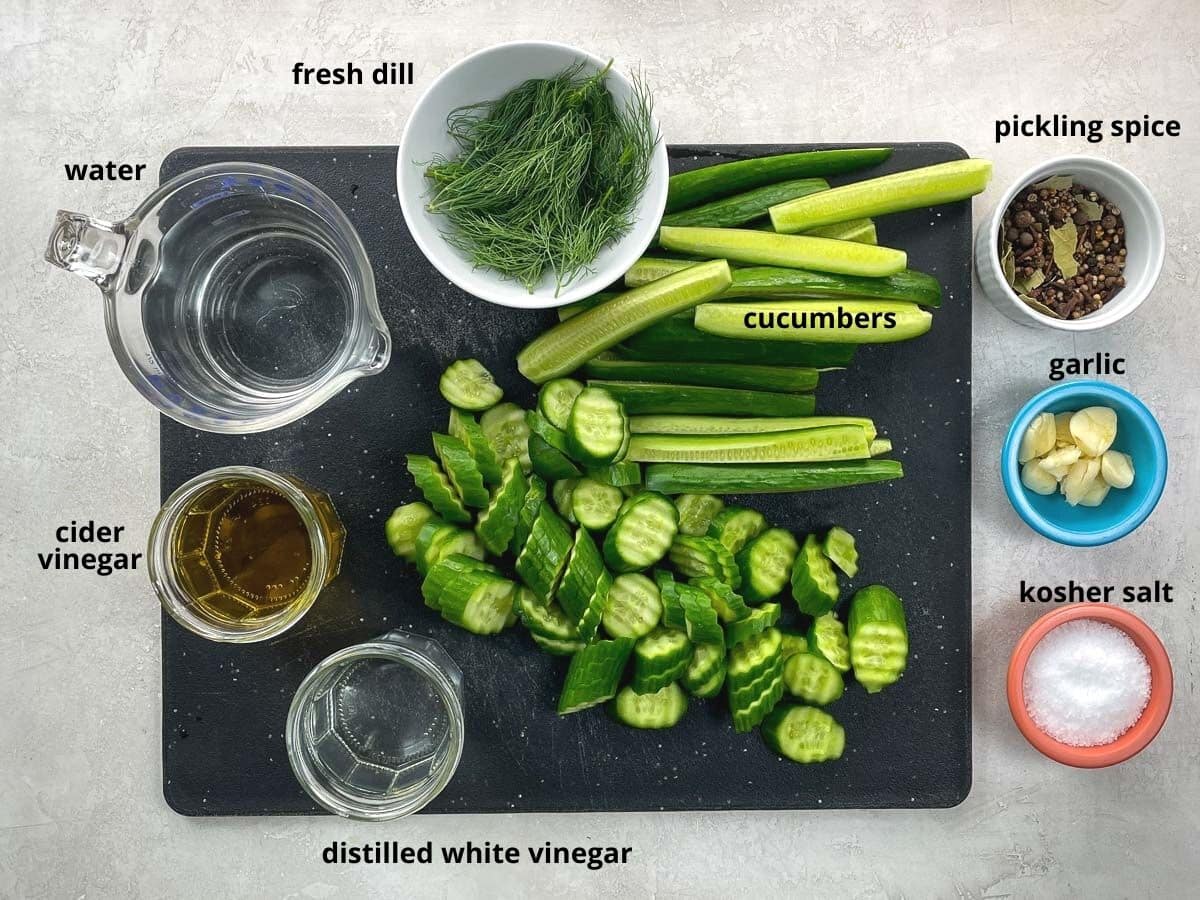
- You can use any cucumbers you like. My favorites are mini seedless cucumbers (like these), which have a nice thin skin and great size, shape, and texture. Kirby cukes are traditional for pickling. They’re also small and very crisp, and tend to have thicker, bumpier skin. Persian or English cucumbers are also a great choice, as is most anything you grow in your garden or find at the farmers’ market.
- Here’s our pickling spice recipe. It’s a great combo of savoriness, warmth, and heat. If you’re substituting a different blend, you’ll need to add the spice separately.
- A combination of distilled white vinegar and apple cider vinegar, mixed with an equal amount of water, gives just the right bite and flavor profile. This combination is also appropriate for hot water bath canning, but we don’t need to worry about that when making pickles for the refrigerator.
- Plenty of fresh garlic and dill add layers of traditional flavor.
- The volumetric measurements in this recipe are calibrated for Diamond Crystal and Morton’s kosher salt. You can substitute pickling salt or another brand of kosher salt without anti-caking agents by weight if you like.
How to make them
Here’s an overview of what you’ll do to make a great batch of spicy refrigerator pickles. You can see the steps in action in the video that accompanies this post, and get all the details in the recipe card below.
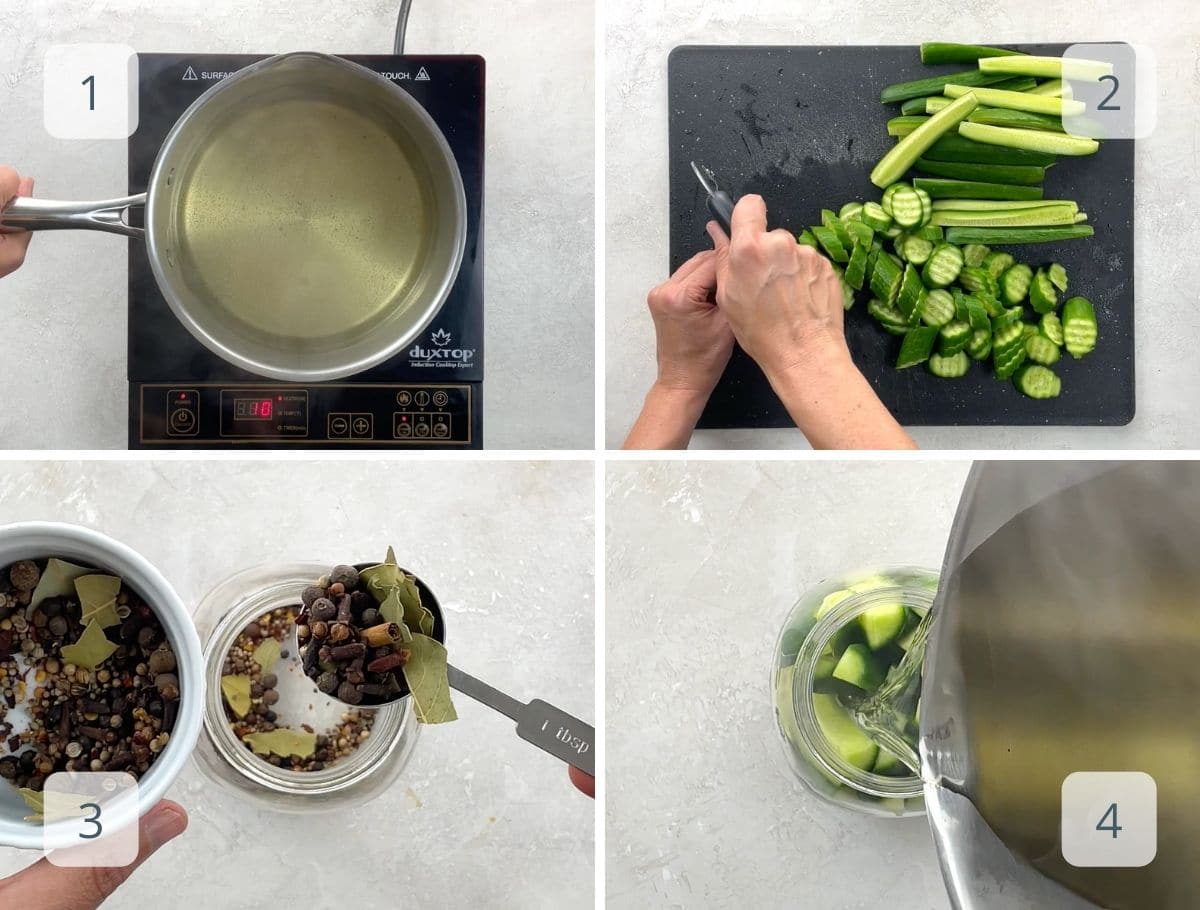
- Make the brine and heat it to dissolve the salt.
- Trim the ends from the cucumbers and cut them into spears and/or slices. I like to use a crinkle cutter for the slices.
- Into each jar, place some pickling spice, garlic, and dill. Then pack with cucumbers.
- Pour the slightly cooled brine overtop. Let cool to room temperature, then position lids and refrigerate for at least 24 hours, up to a month.
Expert tips and FAQs
Using the ratios in our pickling spice, they have a very gentle heat. To make them spicier, you can add as many more chili flakes as you like, or slice one jalapeño pepper and add it to the jar with the pickles, seeds and all.
When canning, it’s important to bring the brine to a boil to ensure any impurities are dispensed with. When making pickles for the fridge, you don’t need to boil the brine, since you’ll keep the pickles under refrigeration and use them within a month.
I like to heat the brine to dissolve the salt and use it when it’s still fairly warm to help extract the flavors from the garlic, dill, and spices. If you feel better bringing it to a full boil before using it, you’re welcome to. Just don’t boil it for too long, or it will get too concentrated.
Absolutely. Our pickling spice recipe and brine are both designed to enhance a wide variety of vegetables. Try thinly sliced zucchini, blanched green beans, carrots, and more. I prefer my brine without any sweetness, but depending on the vegetable and your preferences, you can add a few tablespoons of sugar if you like.
This recipe will keep well in an airtight container in the fridge for up to a month. Truth be told, pickles rarely last that long in our household.
More favorite pickles and ways to use them
- Pickled red onions
- In tuna salad
- Fry them
- Pop them on a burger, veggie burger, or crispy chicken sandwich
Hungry for more?
Subscribe to Umami Girl’s email updates, and follow along on Instagram.
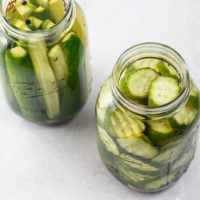
Spicy Refrigerator Pickles
Ingredients
- 2 cups (475 ml) water
- 1 cup (240 ml) apple cider vinegar (5% acidity)
- 1 cups (240 ml) distilled white vinegar (5% acidity)
- 34 grams kosher salt, see note for volumes
- ¼ cup homemade pickling spice
- 8 cloves garlic, smashed
- ½ cup (4 grams) fresh dill sprigs
- 2 pounds (900 grams) cucumbers
Instructions
- Stir together the water, vinegars, and salt in a medium pot and heat until salt is completely dissolved. Turn off and let cool slightly.
- Meanwhile, place two tablespoon of pickling spice, four garlic cloves, and 1/4 cup dill sprigs into each jar.
- Cut the cucumbers into spears or slices.
- Pack the cucumbers tightly into the jars.
- Pour brine into jars to cover the cucumbers.
- Leave to cool at room temperature.
- Position the lids and rings on the jars and tighten.
- Refrigerate for at least 24 hours, up to one month.
Notes
- You can use any cucumbers you like. My favorites are mini seedless cucumbers (like these), which have a nice thin skin and great size, shape, and texture. Kirby cukes are traditional for pickling. They’re also small and very crisp, and tend to have thicker, bumpier skin. Persian or English cucumbers are also a great choice, as is most anything you grow in your garden or find at the farmers’ market.
- (34 grams) is 4 tablespoons of Diamond Crystal kosher salt and 2 1/2 tablespoons Morton’s kosher salt.
- Using the ratios in our pickling spice, they have a very gentle heat. To make them spicier, you can add as many more chili flakes as you like, or slice one jalapeño pepper and add it to the jar with the pickles, seeds and all.
- Our pickling spice recipe and brine are both designed to enhance a wide variety of vegetables. Try thinly sliced zucchini, blanched green beans, carrots, and more. I prefer my brine without any sweetness, but depending on the vegetable and your preferences, you can add a few tablespoons of sugar if you like.
- This recipe will keep well in an airtight container in the fridge for up to a month. Truth be told, pickles rarely last that long in our household.
Nutrition
Nutrition information is automatically calculated, so should only be used as an approximation.
Here’s the original text from 2009
Some of my favorite neighbors are people we’ve never met. I don’t know their names or really understand which house is theirs among the many whose tiny urban backyards we can see from our bedroom windows. If I passed these folks on the sidewalk, I might recognize their stooping postures or shuffling gaits, but I wouldn’t know their faces. Still, we aren’t strangers.
The hollow scream of cheap aluminum pots
Every year as summer is just about threatening to slip away quietly into fall, when maybe we’ve started to turn our own attention toward the first day of school and take a few tentative steps back into the rushing rhythms of the productive life, an arresting sound greets us of a morning. It’s the hollow scream of cheap aluminum pots scraping against concrete, accompanied by percussive bursts of Italian-American chatter.
Then, like sandpaper, box upon thick cardboard box filled with plum tomatoes being dragged out to the grassless yard. For two days, morning till night, the work of putting up those tomatoes in gleaming glass quart jars is the only work in the world. It gets louder, rowdier as the hours wear on, fueled by the jugs of homemade wine that will be the work of a later fall day.
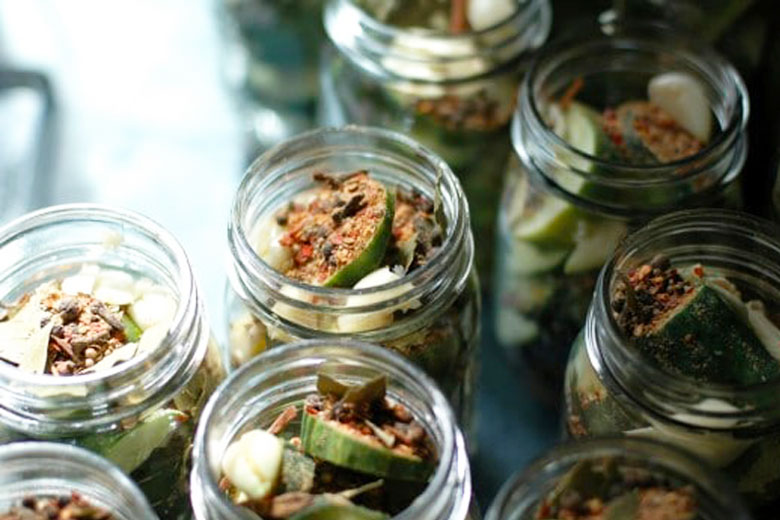
A world apart
In years past, we would steal shy glances out the bedroom windows, drinking in the romance of that distant lifestyle brought close only by population density. In some vague sense we paid homage to the shifting seasons and were comforted by the certainty of that storied process arriving every August.
But then we marched back onto our trains, into our offices, and existed in a world apart from that life.
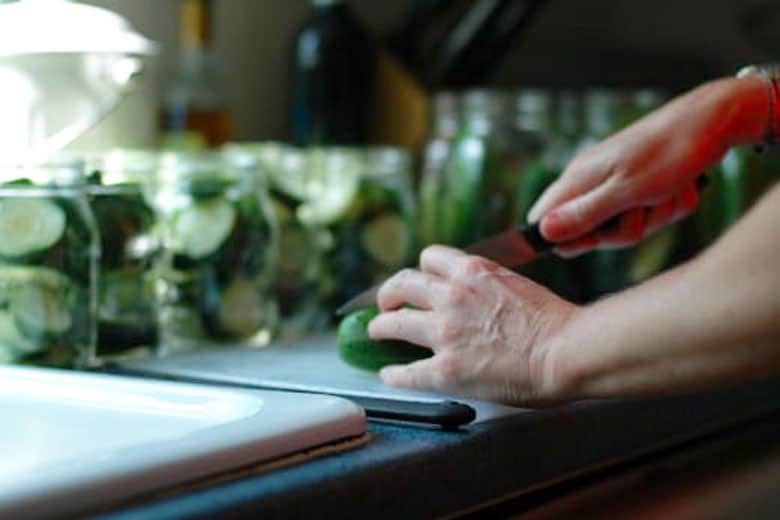
It nourished us
Last year about this time, we had our own first go at canning tomatoes. With a weeks-old baby and an awful lot of apprehension about government-sanctioned safety practices, we canned like fugitives in the middle of the night.
We crushed, we food-milled, we funneled. We had our share of fun, but then we meticulously sanitized jar mouths and lidded them with sterilized tongs. We followed the letter of the law and, unfortunately, some of the spirit too.
On top of it all we felt a little like kids playing house, in funny old-fashioned clothes from the back of mom’s closet and too-big shoes. Even so, night after winter night, we reveled in our canning-enabled spaghetti dinners and homemade pizzas, which nourished us in ways we hadn’t known before.
Homemade pickles
In the year since then, the resurgence of home canning in this country has been nothing short of astounding. Canning is the subject of articles, websites, revolutions and puns galore.
We weren’t ready to dive head-first into canning party mode this year like all those organized revolutionaries out there, but we did invite a few friends to pickle, play and share a drink with.
Sure, there were a number of unplanned trips to the store for forgotten ingredients (oh, is there lots of salt in pickles?), a few pint-sized “helpers” underfoot at inopportune moments—but also the heady, soulful aromas of toasted pickling spices, the deliciously satisfying clicks of our jars sealing as they cooled, and the season’s first crisp breeze blowing through the kitchen windows.
This time, we acidified and processed carefully, but we didn’t obsess. We are learning to make this thing our own—part of the real, messy lives we lead from inside these windows. Something we’ll be able to do for years, until our backs stoop and our gaits shuffle. It’s us canning now, and we’re pickle-faced with gladness. Won’t you join us?
Hungry for more?
Subscribe to Umami Girl’s email updates, and follow along on Instagram.

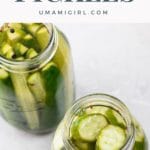
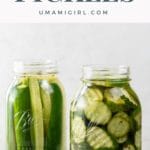
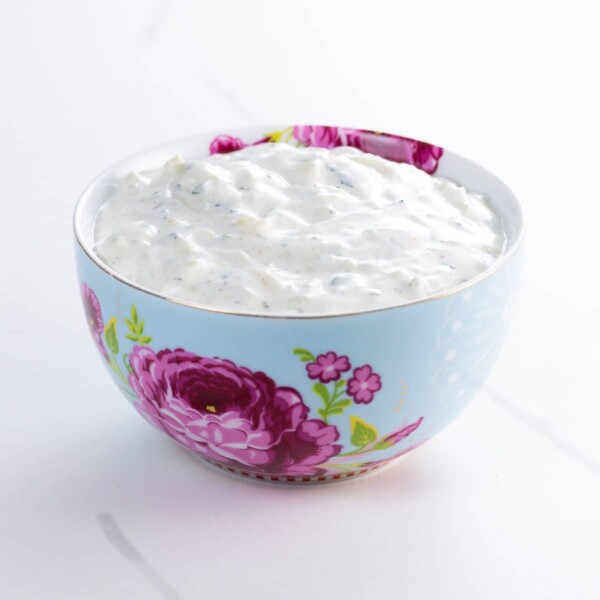
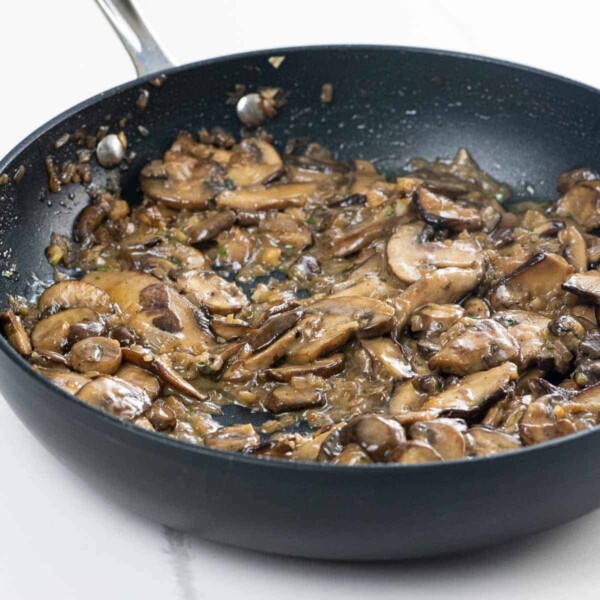
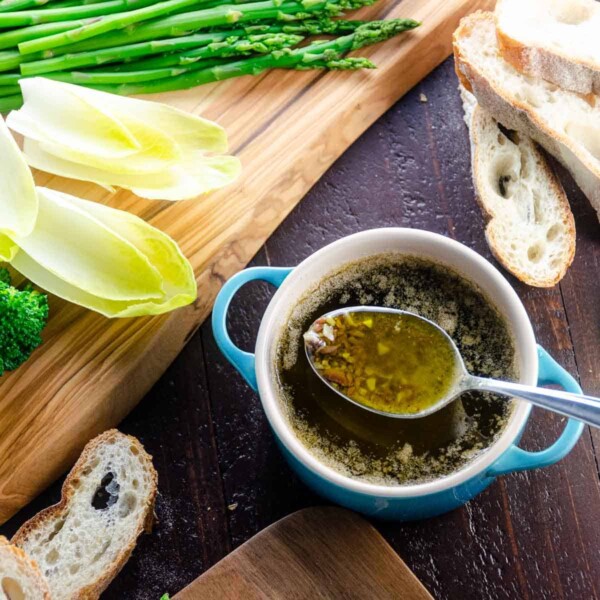
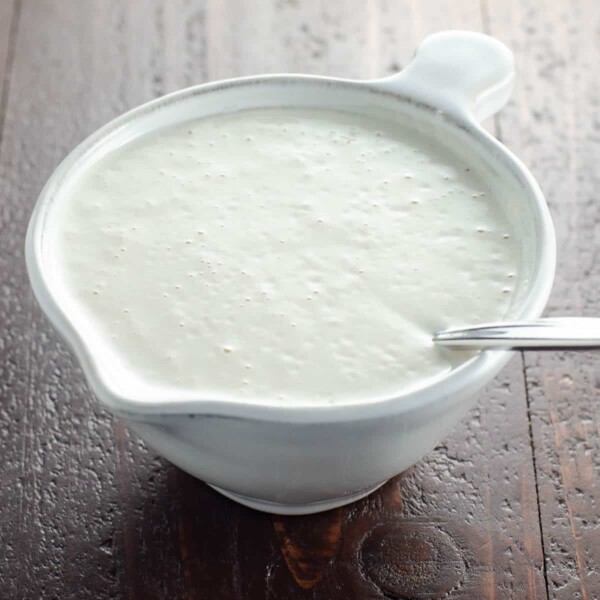







I had 3 jars of homemade pickles that did not seal. Is it possible to try sealing the jars again or will the pickles get too mushy (I use hot-water bath)?
If you want to get ’em really crunchy, I hear the way is to tuck in a couple of fresh grape or oak leaves. The tannins do some kind of magic in there.
Hi Vicki, it’s hard to do, but yes. They should probably sit for a couple of weeks before you dive in. I’ve eaten refrigerator pickles after only a couple of days, and they’re tasty but not fully pickled yet. If you go through all the work of processing the jars, you might as well leave them alone for a while. If you have a little extra brine, you could make a small jar of refrigerator pickles to snack on while you wait!
I made dill pickles this year, with my mom’s recipe, but they
are really salty. Are you suppose to let them sit for a while before opening them?? Yours look really good.
Very nice post. I enjoyed your writing, as well as your subject. We have also returned to pickling, although we are doing it on the easy side (meaning refrigerated pickles).
More power to you on doing what our grandparents did. It may not be cheaper than store bought, but it has to be healthier, and is undeniably more satisfying.
Funny. I dreamed about canning last night.
WOW! You have been busy! :o)
Can’t wait to taste those pickles…
Next year I just may have to crash the canning party! You know me… SLOWLY making my way into the world of homemade (food anyway… LOL — crafts, done…)